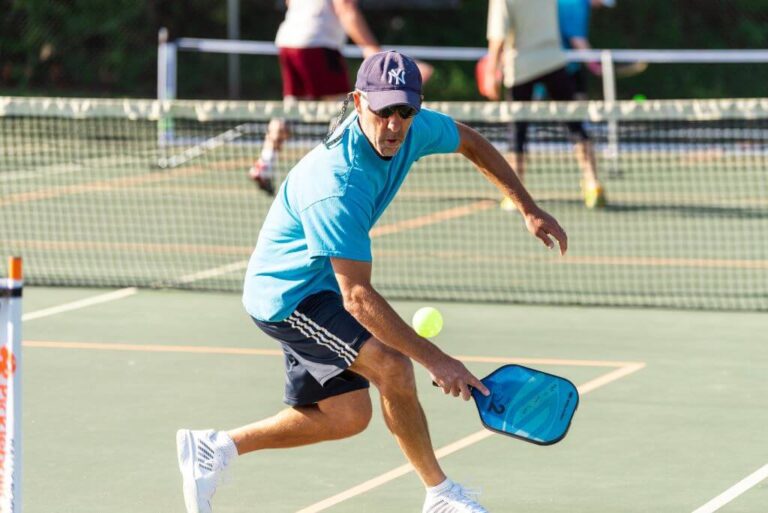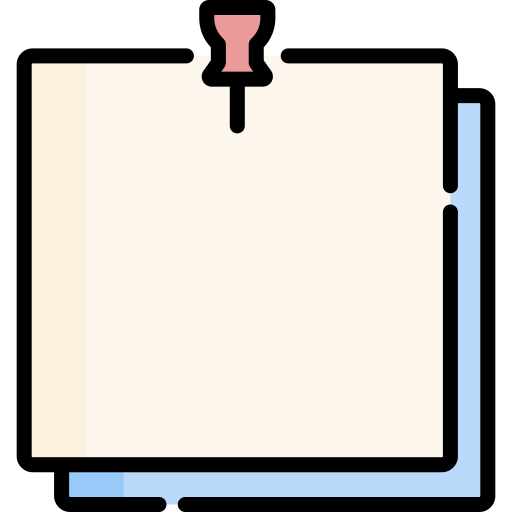As pickleball continues to grow in popularity, mastering the fundamentals of the game becomes increasingly important. One of those key fundamentals is the volley. Which is an essential shot that can be the difference between winning and losing a point.
Learning how to do a perfect volley in pickleball is simple, you just have to understand how to do it. Of course, perfecting it is another thing, but that’s where deliberate practice comes to play.
We’ll go through everything you need to know about volleys. Why you should learn to volley in pickleball, and the best tips to improve your volleying game.
What Is a Volley in Pickleball?
A volley in pickleball is a shot that is struck in the air before the ball bounces on the player’s side of the court. It’s a quick and aggressive shot that is used to maintain control of the game and put pressure on the opposing team.
To execute a volley, a player must be positioned close to the net and use a short, compact swing to hit the ball back over the net. It’s important to keep the wrist firm and the paddle face perpendicular to the net to ensure accuracy and control.
Volleys are typically used when the ball is hit directly at the receiving player or when the player is positioned close to the net. This shot is particularly useful when the opposing team hits a soft shot, known as a “dink,”. Which is intended to land in the non-volley zone (also known as the “kitchen”).
Why Should You Learn to Volley in Pickleball
The rules of pickleball allow volleys to be hit anywhere on the court, as long as the player does not touch the net or cross the non-volley zone while hitting the shot. If the ball lands in the non-volley zone, the player must let it bounce before hitting it, unless the ball has already bounced on the opposing team’s side of the court.
Using volleys to their advantage can help players maintain control of the game, put pressure on the opposing team, and win points quickly.
However, volleys can also be risky if not executed properly, as they require good reflexes, hand-eye coordination, and footwork. Additionally, if a player is out of position or hits a poor shot, it can result in a point for the opposing team. Therefore, mastering the volley requires practice, skill, and strategic decision-making.
Best Grip for Volleying
First things first, if you want to improve your volley game in pickleball, you need to understand the best grip for volleying.
There are different types of grips for racquet sports, but the continental grip is the best for volleys. This is because the continental grip is held closer to the player’s body. It is providing the most control and precision among the other kinds of grips. Having your paddle closer to your chest will lessen the time to position your paddle for a return—we’ll talk more about that later.
How to Volley in Pickleball
Volleying is a simple concept and is relatively easy to do, but deliberate and constant practice will improve your volleys. Furthermore, there are rules about volleying in pickleball that you need to know about so that you don’t commit a fault or foul and lose the rally.
When the ball is going in your direction, you can choose to hit it mid-air and volley it into the opponent’s side of the court.
However, what you can’t do is:
- Hit a volley while any part of you is touching the net or the non-volley zone (kitchen).
- Hit a volley mid-air and then have your feet touch the non-volley zone as you land.
- Hit a volley right after a service. This violates the 2-bounce rule. The serving team can choose to not return the pickleball after you volley it to them. They will get the point for the rally.
NOTE: If you can’t reach for the volley. You can simply let the pickleball bounce in the kitchen and then step in to return the ball.
Tips to Improve Your Volley in Pickleball
This section of the article is dedicated to individual tips that will help you improve your volleys in pickleball.
Always Be Ready — Athletic Stance
Ideally, an athletic stance allows you to use the least amount of movement possible to play the game.
In pickleball, an athletic stance is when your knees are slightly bent, your body leaning forward, and you have your pickleball paddle in front of you. Staying in this stance or pose, even before the ball is coming your way. It will help you react faster and have your body in the best position to make a return.
Volleys are one of the fastest returns in the game because you don’t wait for the ball to bounce. So, it’s important to assume the stance that will provide you with the best reaction time.
Predict Where the Ball Is Going
A step above the previous tip is to predict where the ball is going. A lot of articles will advise you to look at the ball at all times so that you can catch it the moment it’s returned to you. However, this can be a bit hard. And, if your opponent is a quick or powerful hitter, you might not have enough time to even return the ball.
Instead, through experience, body language, and by looking at your opponent’s eyes, you should be able to tell where they plan on hitting the ball. Oftentimes, especially if you’re playing against an intermediate player who doesn’t need to look at the ball to return it. Experienced players will look at the part of the court they want to aim for.
Once you can predict where the ball is going, changing your grip or paddle direction to forehand or backhand will make a big difference in how fast you can return and volley the pickleball.
Just keep in mind that some players will deliberately look elsewhere to fake the shot in another direction. If that happens, you can look instead at the player’s arm and paddle, and then the ball.
Keep Your Paddle Close to Your Chest
If you’re a new player and the tip above of predicting where the ball is going is too advanced for you, then don’t worry!
Just keeping your paddle close to your chest when you plan on doing a volley will be tons of help already. Having your paddle close to your chest should make it easier for you to hit volleys and react to balls coming your way. The problem with having your paddle too far out is that you’ll have a smaller window to position yourself to return the pickleball.
Having the paddle close to your body shortens the distance the paddle has to travel. It’s kind of a modified athletic stance intended specifically for volleys.
Be Close to The Kitchen
Near the kitchen is the best place to do a volley. The net is shorter since you’re closer to it, you’re closer to the ball so your return is much faster. A faster ball means it’s harder to return, and you can control the pace of the game.
Also, volleys near the kitchen require less power, relying more on accuracy and control. Cutting angles or shooting the ball into a small but annoying area is more important than the strength of the volley. This is also why the continental grip, which isn’t known to generate the most power. It is the best grip for volleying: better control.
Take Your Time to Aim
While playing, you’ll always have that split second to think and decide what to do with the ball. If you’re flustered or nervous, you’ll have a hard time thinking fast enough to execute your shots properly. Calm down and carefully analyze your play.
Taking your time to aim your volley can make or break the rally you’re playing. A well-placed volley can’t be returned or is too fast for the player to react to.
You can aim for the back, for the opposite side. Even for the opposing player if he or she is standing in the kitchen. Since they can’t volley the ball while they’re standing in the non-volley zone. It’s an easy way to score a point.
Low Volleys Are the Best in A Pickle
If you don’t have time to aim, simply return the volley at a low angle to make it harder for the opposing player to return the ball.
Here are some reasons why low volleys are great in pickleball:
- They are difficult for your opponent to return. Allowing you to control the pace of the game by forcing your opponent into a difficult position when returning the ball.
- Lower volleys are faster since they are lower to the ground. They usually don’t have enough force to bounce significantly. Even if your opponent waits for a bounce, it will be difficult to return.
However, low volleys are pretty difficult, especially since you’re aiming for only a few inches above the net. If you make a mistake here and hit the net, your opponent wins the rally. This is where accuracy and control matter the most.
Soften Your Grip
Lastly, you don’t need a strong, sturdy grip when volleying. Especially if all you can do is react enough to return the shot. A tight grip will leave you rigid and tense.
Simply softening your grip and relaxing your shoulders will make volleys feel ten times more natural and easy for you to do. You can easily practice this by hitting a pickleball repeatedly against a wall with a soft grip. While you’ll notice that your power is much less, your control, accuracy, and fluidity in your movements should improve.




































